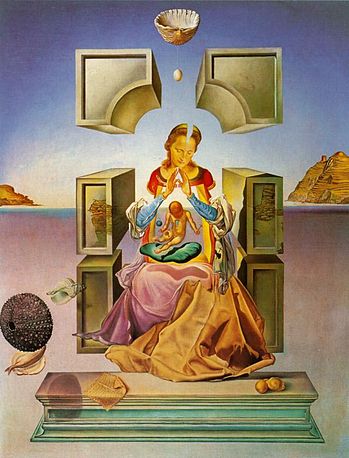Facts About The Madonna of Port Lligat
"The Madonna of Port Lligat" is a captivating pair of paintings by the renowned artist Salvador Dalí. The first painting, completed in 1949, measures 49 x 37.5 centimeters and is housed at the Haggerty Museum of Art at Marquette University in Milwaukee, Wisconsin. Intriguingly, Dalí presented this piece to Pope Pius XII, who bestowed his blessing upon it. The following year, Dalí created a second version, sharing the same title and thematic motifs but introducing different poses and details. This larger work, measuring 275.3 x 209.8 centimeters, is prominently displayed at the Nagasaki Prefectural Art Museum in Japan.
Both paintings depict a seated Madonna, modeled by Dalí's wife Gala, cradling the infant Christ. A notable feature of these works is the rectangular voids cut into the torsos of both figures, symbolizing their divine essence. In the 1950 version, an additional detail is the presence of a piece of bread at the center of Christ's figure. The backgrounds of both paintings are enriched with elements from the coast of Port Lligat, Catalonia, enhanced by Dalí's signature surrealistic elements such as nails, fish, seashells, and an egg. The 1949 version also includes a sea urchin, while the 1950 version introduces a rhinoceros and angelic figures, also modeled by Gala.
These paintings have made a significant cultural impact. Inspired by Dalí's artwork, Fray Angelico Chavez wrote a poem and book titled "The Virgin of Port Lligat" which was recognized as one of the best books of 1959 by the Catholic Library Association. Additionally, in Larry Niven's science fiction novel "Protector" one of the main characters adorns their spacesuit with an image of this painting, underscoring the artwork's enduring influence.

 Canada
Canada